Endurance training of respiratory muscles improves cycling performance in fit young cyclists
- PMID: 15132753
- PMCID: PMC419707
- DOI: 10.1186/1472-6793-4-9
Endurance training of respiratory muscles improves cycling performance in fit young cyclists
Abstract
Background: Whether or not isolated endurance training of the respiratory muscles improves whole-body endurance exercise performance is controversial, with some studies reporting enhancements of 50% or more, and others reporting no change. Twenty fit (VO2 max 56.0 ml/kg/min), experienced cyclists were randomly assigned to three groups. The experimental group (n = 10) trained their respiratory muscles via 20, 45 min sessions of hyperpnea. The placebo group (n = 4) underwent "sham" training (20, 5 min sessions), and the control group (n = 6) did no training.
Results: After training, the experimental group increased their respiratory muscle endurance capacity by 12%. Performance on a bicycle time trial test designed to last about 40 min improved by 4.7% (9 of 10 subjects showed improvement). There were no test-re-test improvements in either respiratory muscle or bicycle exercise endurance performance in the placebo group, nor in the control group. After training, the experimental group had significantly higher ventilatory output and VO2, and lower PCO2, during constant work-rate exercise; the placebo and control groups did not show these changes. The perceived respiratory effort was unchanged in spite of the higher ventilation rate after training.
Conclusions: The results suggest that respiratory muscle endurance training improves cycling performance in fit, experienced cyclists. The relative hyperventilation with no change in respiratory effort sensations suggest that respiratory muscle training allows subjects to tolerate the higher exercise ventilatory response without more dyspnea. Whether or not this can explain the enhanced performance is unknown.
Figures
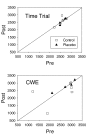

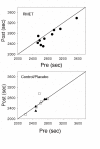
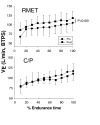
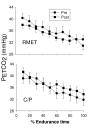


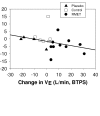
References
-
- Sheel AW. Respiratory muscle training in healthy individuals: physiological rationale and implications for exercise performance. Sports Med. 2002;32:567–581. - PubMed
-
- Boutellier U, Buchel R, Kundert A, Spengler C. The respiratory system as an exercise limiting factor in normal trained subjects. Eur J Appl Physiol Occup Physiol. 1992;65:347–353. - PubMed
-
- Boutellier U, Piwko P. The respiratory system as an exercise limiting factor in normal sedentary subjects. Eur J Appl Physiol Occup Physiol. 1992;64:145–152. - PubMed
-
- McMahon ME, Boutellier U, Smith RM, Spengler CM. Hyperpnea training attenuates peripheral chemosensitivity and improves cycling endurance. J Exp Biol. 2002;205:3937–3943. - PubMed
Publication types
MeSH terms
Substances
Grants and funding
LinkOut - more resources
Full Text Sources
Other Literature Sources

